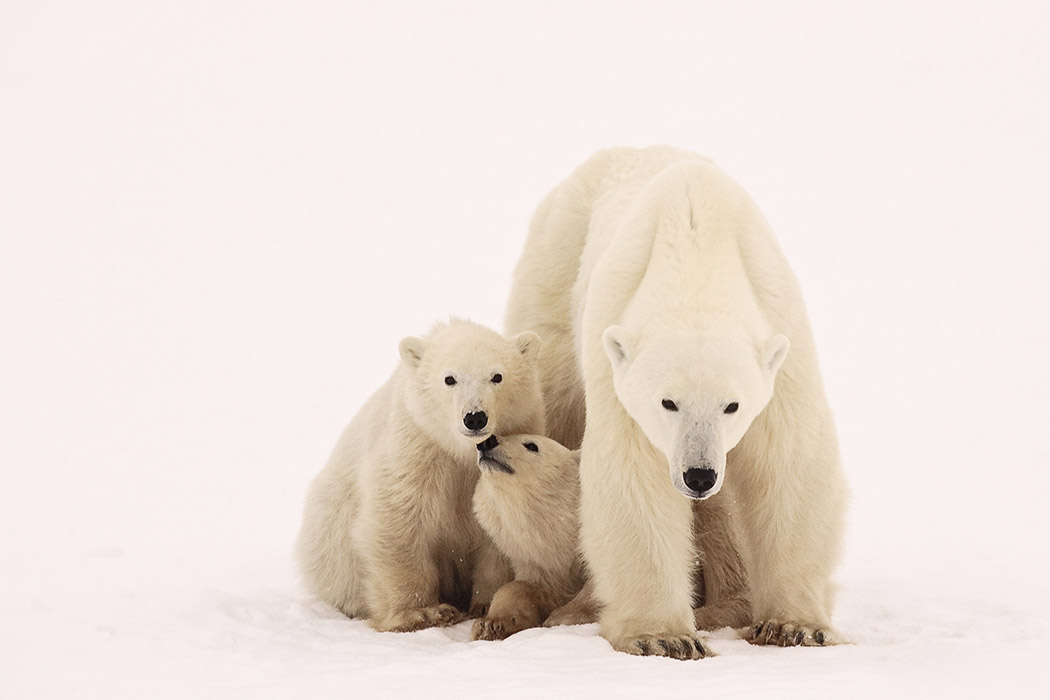
Most references to polar bears in the twenty-first century evoke pictures of stranded animals, either on exposed beaches or drifting ice sheets as glaciers retreat into the ocean. The Arctic’s severe environment make it difficult for animals to produce the next generation of young, and rearing a polar bear cub requires a lot of effort.
Polar bear mothers are required to construct a snow burrow in the fall where they will spend the winter giving birth to their pups and caring for them without access to food or water. In typical litters of one or two cubs, polar bears have a survival rate of about 70%, though this figure is gradually falling to closer to 40%. Mom and the cubs will come out of the den in the spring after spending the next 2.5 to 3 years teaching them how to live in the Arctic. It is shocking to learn that polar bear mothers occasionally adopt additional kids from another mother given the huge investment she has made in her offspring.
This practice is ubiquitous throughout the animal kingdom—a natural phenomena known as alloparenting or cooperative breeding—where many species raise offspring that are not their own. In fact, certain animals, like meerkats, require the assistance of other members of the social group in order to successfully raise their young. When people are closely related or extremely social, alloparenting most frequently develops in group-living species. In these situations, animals either boost their chances of receiving reciprocal care for their future progeny or pass on their shared genes by taking care of more distant relatives. In this way, helpers reap the rewards of their labor while still appearing altruistic.
Polar bears, however, do not fit any of these criteria for the development of alloparenting. They are solitary, inhabit low densities far from other groups, and rear cubs that require a lot of energy to care for because they are young for such a long time. Why do they do it, then?
Although Indigenous tribes presumably have traditional knowledge of polar bears that dates back thousands of years, Western researchers have examined many populations of polar bears around the Arctic since the 1960s. Polar bears have been seen adopting a single unrelated cub into an already-existing litter during this time, as well as adopting a fresh litter of cubs after the death of their own cubs.
One argument is that by adopting, new mothers gain invaluable parenting experience, raising the likelihood that their next litter will succeed. However, the evidence does not appear to back this up. That polar bears lack the cognitive capacity to keep track of the number or identity of their own cubs is the most likely explanation. Since solitary polar bears rarely encounter one another, it is generally safe for a mother to presume that any cubs within arm’s reach are hers, with the proviso that she won’t be aware if one of her kids has accidentally drifted into the group and isn’t supposed to be there. It’s also likely that mothers who recently lost their own cubs have a genetic propensity for parenthood and will take in any cubs that are offered to them as their own.
In any event, it appears that this unusual case of a cub adoption is just another illustration of a costly energy error rather than a touching illustration of generosity and compassion. Every parent must still fight for their own life in the wild in order to pass on their genes to the next generation.

Leave a Reply